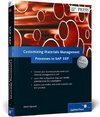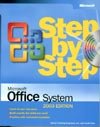
-
 Anglický jazyk
Anglický jazyk
Serial buses
Autor: Source: Wikipedia
Source: Wikipedia. Pages: 116. Chapters: Musical Instrument Digital Interface, Serial port, I²C, HyperTransport, PCI Express, InfiniBand, Serial access, Serial ATA, IEEE 1394 interface, Controller area network, Serial digital interface, Serial Peripheral... Viac o knihe
Na objednávku
25.29 €
bežná cena: 28.10 €
O knihe
Source: Wikipedia. Pages: 116. Chapters: Musical Instrument Digital Interface, Serial port, I²C, HyperTransport, PCI Express, InfiniBand, Serial access, Serial ATA, IEEE 1394 interface, Controller area network, Serial digital interface, Serial Peripheral Interface Bus, IEEE 1355, UniPro, MIL-STD-1553, CANaerospace, Fieldbus, Local Interconnect Network, Token ring, Synchronous Serial Interface, AS-Interface, EIA-485, COM port redirector, 1-Wire, MIDI 1.0, Current loop, Profibus, UNI/O, ARINC 825, DeviceNet, System Management Bus, MIL-STD-1760, SGPIO, ARINC 818, ARINC 429, MADI, EtherNet/IP, RS-422, RapidIO, Serial communication, I²S, ESATAp, Power Management Bus, List of network buses, ControlNet, VLYNQ, ESATA/USB, Serial Storage Architecture, OCTART 8 channel Communications Processor, Phoenix Contact, EIA-530, RS-423, Frontline Test Equipment, Active State Power Management, ISO 11898, Bus coupler, Ethernet over USB, HIL bus, Common Industrial Protocol, RS-449, Serial Gigabit Media Independent Interface, Peripheral Sensor Interface 5, HOTLink, Multi Point Interface, Serial Input/Output eXchange, MilCAN, Serial over LAN, GMLAN, INTERBUS, CAN BUS Monitor, High-Speed Serial Interface, FlexCAN, Smart Battery Data, Aurora, DebugWIRE, Commercial Standard Digital Bus, Microwire, Gigabit Video Interface, Synchronous Serial Port, HSSL, 9-Pin Protocol, HAVi. Excerpt: MIDI ( ; Musical Instrument Digital Interface) is an industry-standard protocol that enables electronic musical instruments (synthesizers, drum machines), computers and other electronic equipment (MIDI controllers, sound cards, samplers) to communicate and synchronize with each other. Unlike analog devices, MIDI does not transmit an audio signal: it sends event messages about musical notation, pitch and intensity, control signals for parameters such as volume, vibrato and panning, cues, and clock signals to set the tempo. As an electronic protocol, it is notable for its widespread adoption throughout the music industry. MIDI protocol was defined in 1982. All MIDI-compatible controllers, musical instruments, and MIDI-compatible software follow the same MIDI 1.0 specification, and thus interpret any given MIDI message the same way, and so can communicate with and understand each other. MIDI composition and arrangement takes advantage of MIDI 1.0 and General MIDI (GM) technology to allow musical data files to be shared among many different devices due to some incompatibility with various electronic instruments by using a standard, portable set of commands and parameters. Because the music is stored as instructions rather than recorded audio waveforms, the data size of the files is quite small by comparison. By the end of the 1970s, electronic musical devices were becoming increasingly common and affordable. However, devices from different manufacturers were generally not compatible with each other and could not be interconnected. Different interfacing models included analog control voltages at various standards (such as 1 volt per octave, or the logarithmic "hertz per volt"); analog clock, trigger and "gate" signals (both positive "V-trig" and negative "S-trig" varieties, between -15 V to +15 V); and proprietary digital interfaces such as Roland Corporation's DCB (digital control bus), the Oberheim system, and Yamaha's "keycode" system. In the late seventies, Dave Smit
- Vydavateľstvo: Books LLC, Reference Series
- Rok vydania: 2022
- Formát: Paperback
- Rozmer: 246 x 189 mm
- Jazyk: Anglický jazyk
- ISBN: 9781156600726

 Nemecký jazyk
Nemecký jazyk 










